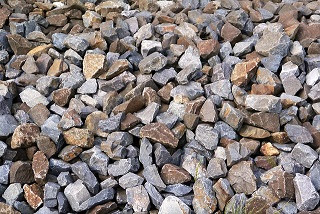Table of Contents
What is Ballast?
Ballast may be defined as a layer of broken stone, gravel, moorum or any other material placed under and around the sleepers to distribute the load from the sleepers to the formation and for providing drainage as well as providing lateral and longitudinal stability to the track.
Function of Ballast In Railway Track

- It provides a suitable foundation for the sleepers.
- It transfers and distributes loads from sleepers to the large area of the formation.
- It increases the elasticity and resilience of the track for getting good riding comfort.
- It provides lateral and longitudinal stability to the track. The lateral stability depends fully on the ballast.
- It provides an easy means of maintaining evenness and alignment of the track.
- It provides effective drainage to the track.
- It helps in protecting the top surface of the formation.
Type of Ballast
Broken Stone
It is the best material to be used in ballast for the railway track. Mostly this type of ballast is used on Indian Railway. Stone to be used as ballast must be hard, tough and nonporous. For stone ballast generally igneous rocks such as granite, quartzite and hard trap are most suitable.
Where the above stones are not available, softer stones like sandstone, limestone, etc may be used as ballast. the quality of stone should be such that neither it is porous nor flakes off under the vagaries of weather.
Gravel Ballast
Gravel stands second in suitability as ballast and used in large quantities in many countries. It is obtained from river beds or gravel pits along the track.
Cinders or Coal Ash
The residual obtained from the coal used in locomotives is known as cinder or ash. It is available in large quantities in all railways. This type of ballast normally is used in yards and sidings or as an initial ballast in new construction being cheap and easily available.
Sand Ballast
Sand ballast stands fourth in merits as a ballast material. Coarse sand is better than fine sand. Primarily sand ballast is used for cast iron pot sleepers. It is also used for wooden and steel sleepers where traffic density is very low.
Moorum
Moorum is the decomposed laterite rocks. It is found in abundance in many parts of India. Normally it is used as initial ballast in new construction and also as sub-ballast. It is found in red or yellow colour. A good moorum for ballast must contain large quantities of the small piece of laterite stone.
Kanker
It is found in the form of modules of varying sizes. Where stone is not easily available, it can be used as ballast for railway track also.
Brick Ballast
Characteristic of Good Ballast
- It should be hard, tough and wear resistance.
- It should be hard and should not get crushed under moving loads.
- It should be nonporous and non-absorbent of water.
- It should be cheap and easily available.
- It should have sufficient elasticity and should resist attrition.
- It should have sufficient grip over the sleeper to prevent their horizontal movement.
- It should provide good drainage of water.
- It should not be brittle.
- It should be cubical having sharp edges.
Thanks for reading the article. If you found this helpful please don’t forget to share it.
Also, read
What is Rails? Function and Types
It’ѕ difficult to find well-informеd pеople
about this subject, however, you sound lіke you know what you’re talking abоut!
Thanks